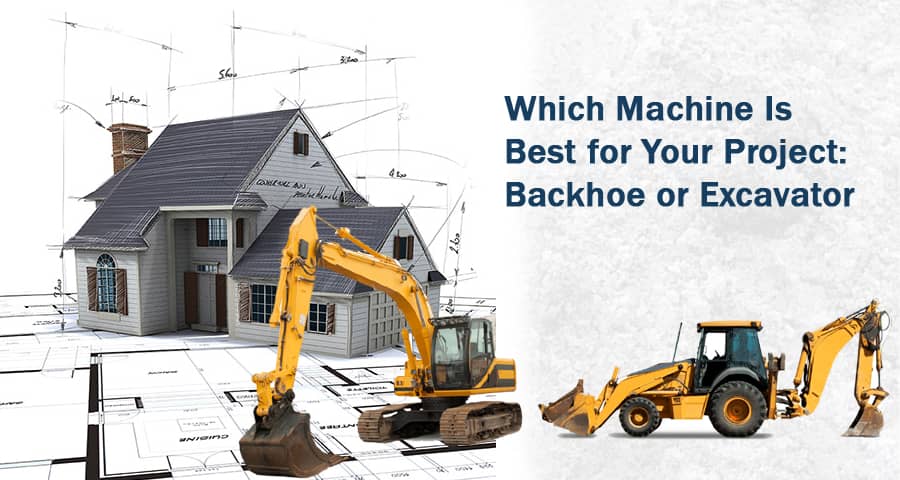Which Machine Is Best for Your Project: Backhoe or Excavator
Define Backhoe
An excavation backhoe consists of a tractor base and a jointed two part arm with a digging bucket attached. In many cases, backhoes have front loader attachments on the opposite side, so the seat swivels 360 degrees to let the operator face the front loader.
Workflow of Backhoe
On the backhoe arm, the segment holding the digger bucket is called the dipper or dipper stick, and the segment attached to the tractor is called the boom. For a backhoe, a variety of attachments are available, including drills, hammers, rippers, rakes, and breakers.
Forklifts, brooms, and plows can also replace the front loader. The straps of a lifted object can even be looped over the dipper stick on a backhoe, converting it into a crane.
Define Excavator
In much the same way that a backhoe is constructed, an excavator has a boom, dipper, bucket, and chassis, but excavators can have either tracks or wheels. Excavator uses a digging arm instead of a tractor and are purpose built for working in confined spaces and can handle heavier loads compared to backhoes.
Workflow of Excavator
In spite of the similarity of excavator parts to those of backhoes, excavators have much greater rotation capability. Excavators have cabs that rotate 360 degrees atop their undercarriages, unlike backhoes. A dozer blade is also attached opposite the digging arm of most wheeled and compact excavators.
In addition to standard digging, the excavator can also drill and demolish in addition to digging. Forestry projects often involve the use of excavators with brush cutting attachments.

Key Differences between Backhoe & Excavator
Versatility
In addition to versatility, there is also a difference between an excavator and a backhoe. In spite of the fact that both machines feature a variety of attachment options, the backhoe offers a much larger selection and is therefore more versatile. For projects with a spread out worksite, backhoes are a better choice since they can be driven on roads.
Size
Both machines are roughly the same size, except excavators are larger, heavier, and backhoes are smaller. Large scale industrial projects that involve demolition, mining, driving piles, drilling shafts for rock blasting, or drilling piles are better used with an excavator. A backhoe is more suitable for farming, snow removal, loading, and medium scale construction and excavation projects because it is smaller and more adaptable than a backhoe.
Rotation
From the operator's perspective, backhoes and excavators have different rotation ranges, resulting in very different machines. A backhoe's arm can only pivot about 200 degrees, while an excavator's arm can rotate in a complete circle. Discovering the ins and outs of each machine is the best way to determine which is right for your project.
Mobility
Among its benefits is its ability to travel quickly across a job site and even drive on roads at 25 mph. A proper uses of backhoe will be easier if your project includes several tasks in different locations.
Construction Project Type
It is important to match your machine's size to the scale of your project. For large scale projects requiring shear machine power, excavators often prove more efficient than other machines. A backhoe might be a good option if your project is moderately sized.
Backhoes and excavators can both be used for some tasks, but there are others that require only one. Assess the tasks and attachments you will need on your project so you can decide on the right equipment.
